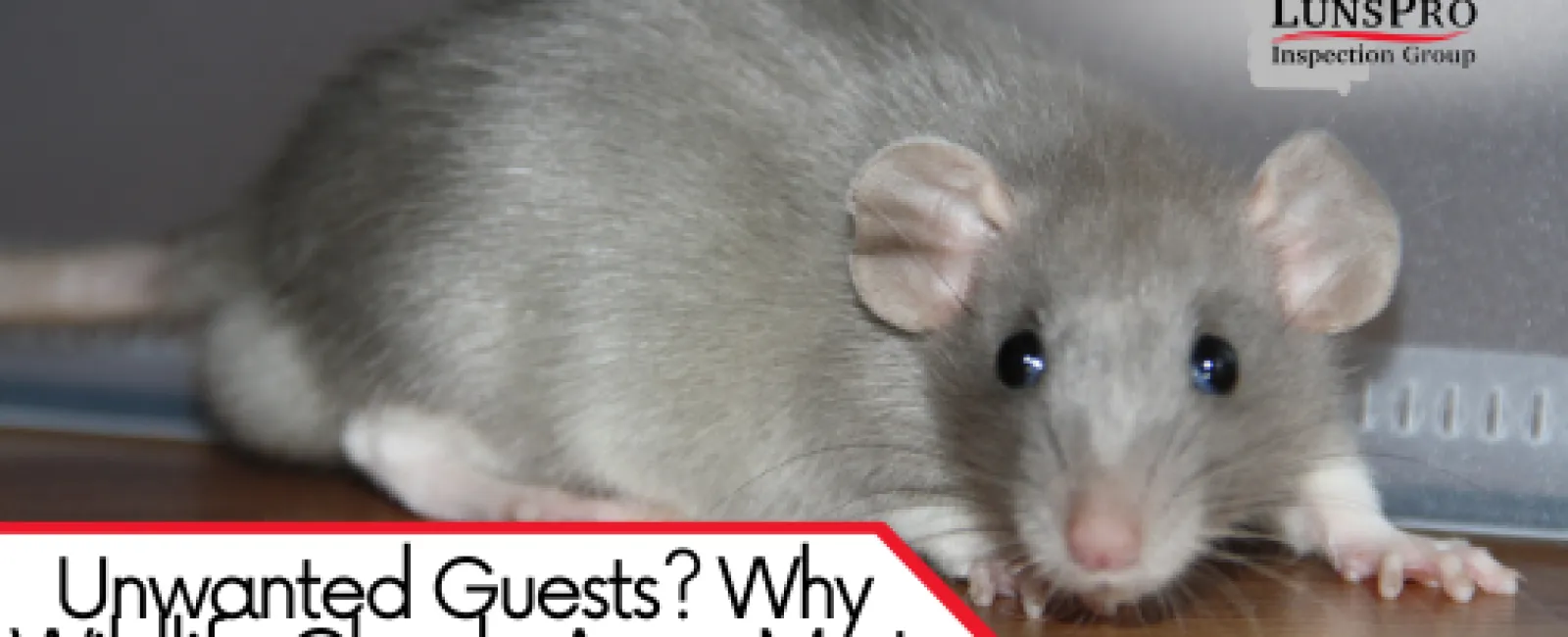When most people think of a home inspection, they imagine checking the roof, plumbing, electrical systems, and HVAC units. But what about the creatures that might already be living inside your walls, attic, or crawl space?
At LunsPro Inspection Group, our certified inspectors—like the ever-thorough Scott T.—routinely look for signs of wildlife intrusion during our inspections. These aren't just pests—they can be serious threats to your home and health.
The Hidden Problem of Wildlife Intrusion
From rats and mice to raccoons, squirrels, bats, and even snakes, wildlife can and often does make its way into homes through small entry points in the roofline, vents, foundation gaps, or chimneys.
Homeowners are often unaware that animals have moved in until the damage becomes obvious. But by then, it's too late—wires have been chewed, insulation is shredded, and droppings may have created a toxic environment.
What We Look For
During every LunsPro home inspection, our team pays close attention to common signs of wildlife activity:
Droppings or Urine Stains - These can indicate nesting sites and signal how long animals have been present.
Chewed Wires and Wood - Rodents love to gnaw on electrical wiring and wooden beams, increasing the risk of fire and structural damage.
Nests or Burrowing Evidence - Animals often create visible nests in attics or crawl spaces.
Access Points - We check for damaged or open vents, torn screens, chimney gaps, and more.
Unusual Smells or Sounds - Odors from animal waste or the sound of scratching and movement can point to an infestation.
Why It Matters
Wildlife can cause more than just property damage—they can pose serious health risks. For example:
Bats can carry rabies and histoplasmosis.
Rodents can spread hantavirus, leptospirosis, and salmonella.
Animal droppings and urine can cause respiratory issues or contaminate HVAC systems.
Identifying and addressing these problems during a home inspection can save you the expense and danger of full-blown infestations.
Prevention Is Key
Even if no wildlife is found during an inspection, we often offer recommendations to help secure your home:
Sealing entry points
Installing critter-proof vent covers
Trimming trees away from the roofline
Keeping crawl spaces dry and clean
At LunsPro, we understand that a thorough inspection includes more than structure—it includes security. Our job isn't done until we're sure your home is safe from top to bottom, inside and out.

